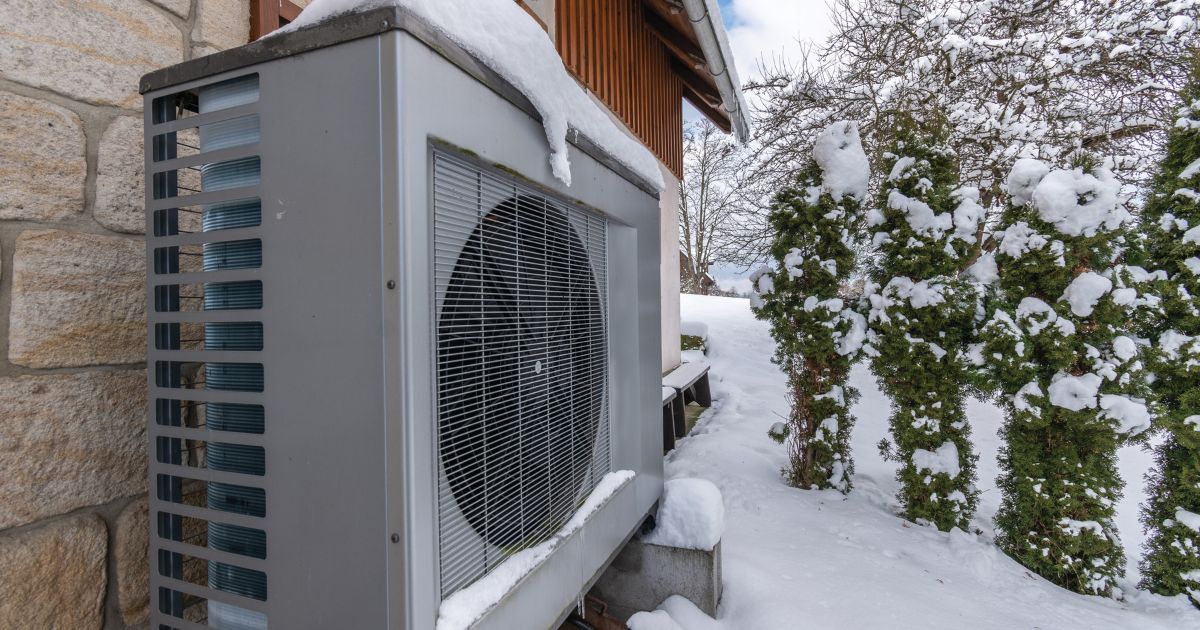When it comes to home grown food production, chickens have got to be close to the ultimate. Eggs are an exceptional food, chickens make eggs out of almost nothing, and the birds themselves give excellent meat when their productive lives are over. All you need is accommodation for the birds We’ve kept chickens on our Manitoulin Island, Ont., place since 2002, and I designed and built this coop with one of my sons.
If there’s one thing we’ve learned after keeping backyard chickens for 20+ years is that there are five main advantages offered by portable, modular chicken houses:
- Simpler to build than a permanent house.
- Modular housing offers flexibility to add or take away additional coops as needed.
- Portable design makes it easier to keep a healthy flock because individual houses can be taken
out of production to break pest cycles. - Moving the location of a chicken house means the birds don’t turn any given patch of ground into a dusty, sometimes-muddy mess.
- Small houses are warmer for the birds in winter. The hinged roof of my design also allows for cooler summer conditions.
One of the best things about this design is that it’s so easy to build – just ordinary skills and no special tools required.
Building the Chicken House

Tools
- Hand-held circular saw for cutting plywood parts
- Portable tablesaw is optional but nice for cutting small parts to width
- Chopsaw for cutting corner trim and lid frame members
- Cordless impact driver and drill for driving screws and boring holes
- Tape measure, 4-foot level and carpenter’s pencil for marking parts
*Total length required. Cut and fit from scraps



Step 1: Cut and Assemble the Bottom

Start by cutting the plywood bottom panel, then fasten the 1 ½” x 1 ½” bottom edging strips to all four sides. Use weatherproof wood glue (I like Titebond III) and #10 x 1 ½” corrosion-resistant screws driven every 6″
along the strips. Drive these screws through the plywood and into the strips, not the other way around. The size of the bottom panel should measure 46 ¾” x 48″.
Step 2: Cut and Assemble Front, Back and Sides

There are four sides to each coop: one front, one back and two angle-topped sides. The angle on the sides forms the slope of the roof. Measure, mark and cut these parts following the plans. As you mark the parts for cutting, make sure they’re the right width to overlap properly in the corners as they fit with the bottom you cut and edged before. The two angled sides should be 46 ¾” wide, and 48″ tall at the peak. The front and back need to be 48″ wide overall. Draw lines for cutting the angle-topped pieces so each pair can be cut from a
single piece of plywood, with a 12″ wide swath of waste plywood in the middle.
Use glue and 1 ¼”- long, corrosion-resistant deck screws to fasten one of the angled sides to the bottom at 90º. This angled side piece measures 46 ¾” wide, so it needs to fasten to one of the 46 ¾” wide sides of the bottom panel – not one of the 48″ sides. It’s easy to make a mistake here, so be careful. Before you actually spread glue, decide right now which of the angled sides will have the door cut out of it. Mark the width of the door on the edge of the bottom panel, then don’t use glue or screws in this area. You’ll cut the door out later, after assembly, so you don’t want glue where you’ll be removing the door. You can put the door of your chicken houses on the left or right side of each house or make some houses left-doored and others right-doored.
Alternating doors like this allow the houses to be placed side-by-side some distance apart, with some clear polyethylene plastic stretched between them to form a shelter. We use this approach to create an enclosed “sunroom” area the hens can use in winter. It’s not as good as summer pasture, but it’s the only option for outdoor time when snow covers everything for months at a time. It’s amazing how much better the hens get along when they enjoy some sheltered outside sunny time.
Fasten the second angled side to the opposite edge of the bottom, then add the back. Use glue and screws on all joints. Working together, these three parts automatically square the structure up, as long as the parts themselves were cut square to begin with.
Finish up the main project body assembly by flipping the house over and adding the front panel. You’ll now have a strong, rigid, four-sided structure that’s ready to build on.
Step 3: Cut Out the Door

Although you could have cut out the door from one of the angled sides before assembly, it’s easier to do it now because the side remains fully supported at this stage. Mark the location of your door, set your circular saw for a depth of cut that’s just enough to go through the plywood, then saw the door outline.
You can make the door any size you want and add a second door on another side of the house if it makes sense for your intended use. Either way, the plywood you’re removing at this stage will become the door itself, so treat it gently and make your cuts tidy. The nice thing about cutting the door opening this way is that it automatically leaves just the right gap between the door opening and the door itself. The gap left by the circular saw blade provides the perfect amount of clearance so the door opens and closes smoothly.
Step 4: Install Edge Trim and Door Trim

Cut the trim boards to length, then fasten these trim boards to the house and door using glue and 1 ¼” deck screws driven from the inside. The so-called 6″ wide fence boards you’re using for this job are just a little over 5″ wide, which is perfect. No need to cut them to width and no need to remove any factory-rounded edges.
You’ll get the best fit of trim boards if you use clamps to hold them to the house with glue applied, then drive the screws from the inside out. It’s possible that occasionally the point of a screw will poke slightly beyond the face of the trim, but that’s fine. A few seconds with a hand-held belt sander or file will take off the points.
Step 5: Build and Install Roof Frame

A hinged roof is one of the things that makes this design so flexible. It lets you reach in to get eggs and it allows lots of ventilation if you prop the lid open during hot weather. Even 3″ or 4″ of open space is enough to let out excess heat. The clear roofing material we used does a lot to warm the coop during winter, and it also lets you look inside and see the chickens when they’re indoors. The heart of the lid is a double layer of 5/8″ fence boards, overlapping in the corners to create lap joints and a frame. Cut and assemble the 10 parts needed for each lid now.
Part lengths in the materials list are accurate, but your house may be turning out a slightly different size than the plans. Just in case, measure and cut the parts to fit your house, not necessarily the plans. Measure the length and width of the top of your house, then make your roof frame 1″ wider and 1″ longer than this size. Also, since the edges of fence boards are rounded, trim the edges of your lumber square to final width of 4 ¾”.
These chicken houses can twist a little if they’re sitting on uneven ground, and this can affect the shape of the top of the house. Use a level to make sure the floor is flat and twist-free before measuring for the size of roof frame parts you need. Shim the house as needed so it sits flat before measuring.
The plans show how the front and back edges of the roof frame need to be angled to match the roof’s slope. Adjust your circular saw to make these angled cuts after assembling the roof frame. Fasten the roof to the house with two 3 ¼” x 5″ half-strap hinges along the back edge

Step 6: Edge the Top Frame

Edging makes the roof frame strong enough to tilt up and down without twisting much, and it helps the roof shed water. Without edging, rainwater would flow around the side of the roof and get in the house. Edging also makes the overall roof look better visually.
Cut the three pieces of the edging you’ll need for the top of each house using 5/4 decking lumber (this stuff is a full 1″ thick), then join these pieces to the roof frame using glue and 3″ deck screws as the overall roof frame is hinged onto the house. The materials list shows how the front edging strip is wider than the two on the sides. There is no edging on the back of the roof. The hinges screw directly to the back edge of the roof frame.

Step 7: Add Roofing
I used clear Suntuf corrugate polycarbonate roofing because it’s widely available and extremely tough.

Step 8: Add Legs and Handles

Legs raised the house higher than snow level in many areas, and it allows them to run underneath at the first sign of trouble.
Lifting handles are an option that makes a lot of sense too, even if you intend to move the houses with a loader tractor most of the time. The plans show how one 24″ length of 1″ diameter galvanized steel pipe sits horizontally, with two 90″ elbows on the ends. Two 1″ diameter x 1 ½” nipples connect the elbows to flanges that get fastened to the chicken house with screws. All these parts are standard, off-the-shelf items available wherever steel pipe and fittings are sold at hardware stores. Pipe fittings like this comes in two types:
black iron and galvanized steel. Always use galvanized for your chicken house because it resists rusting so well.
Step 9: Build and Install Roosts and Nesting Boxes

Backyard chickens should be as happy as possible, and this means giving them access to housing features in line with their nature. Privacy is one important thing for chickens. They prefer to lay eggs in some
kind of enclosure, ideally with a roof or covering over it. This is where nesting boxes come in. Boxes also make it easier to collect eggs. Most of your birds will lay in nesting boxes at the same time each day.
Roosts are another thing that makes chickens happy. Roosts simulate tree branches in a coop. The plans show details for creating boxes and how to fasten roosts where they need to go.
Step 10: Finish the Exterior
Leaving the wood bare is an option, but it won’t look nearly as good because the wood will weather unevenly. The two-part option for finishing we favour uses thick, elastomeric coatings on the exposed areas of Plywood, with exterior deck finishing oil on the trim and roof frame. Why the combination? Two reasons.
First, the elastomeric coating is exceptionally thick, so it covers the cracks, gaps and rough surface of the exterior grade plywood.
The second advantage of a two-part finish is the hinges and latches. Oiling the trim instead of painting it makes it easier to work around the hardware without messing it up. It doesn’t matter if a little finishing oil gets on these parts. You can’t see the oil on the metal. On the other hand, paint would need to be kept completely off the hinges, which is not likely. You’d have to remove the hinges and latches before painting to keep them neat, which is a pain. Chickens provide some of the highest quality protein for the least amount of feed. It’s also easy to handle the birds, house them, and raise your own replacement stock. All these reasons are why efficient chicken keeping is one of the best self-reliant food strategies going. Get yourself some chickens, and you’ll also enjoy some of the most entertaining antics going. Think of a flock as an electricity-free TV substitute. Pull up a lawn chair, watch them for a while and see for yourself how entertaining backyard chickens can be.

Steve Maxwell and his wife Mary live on a 90-acre modern homestead on Manitoulin Island, Ontario in a stone house they built with local materials beginning in 1985. Steve is Canada’s longest-running home improvement and how-to columnist and editor of Home and Property. He divides his time working on the land, building things large and small, and creating articles and how-to videos that teach sustainable, self-reliant, hands-on living skills.













